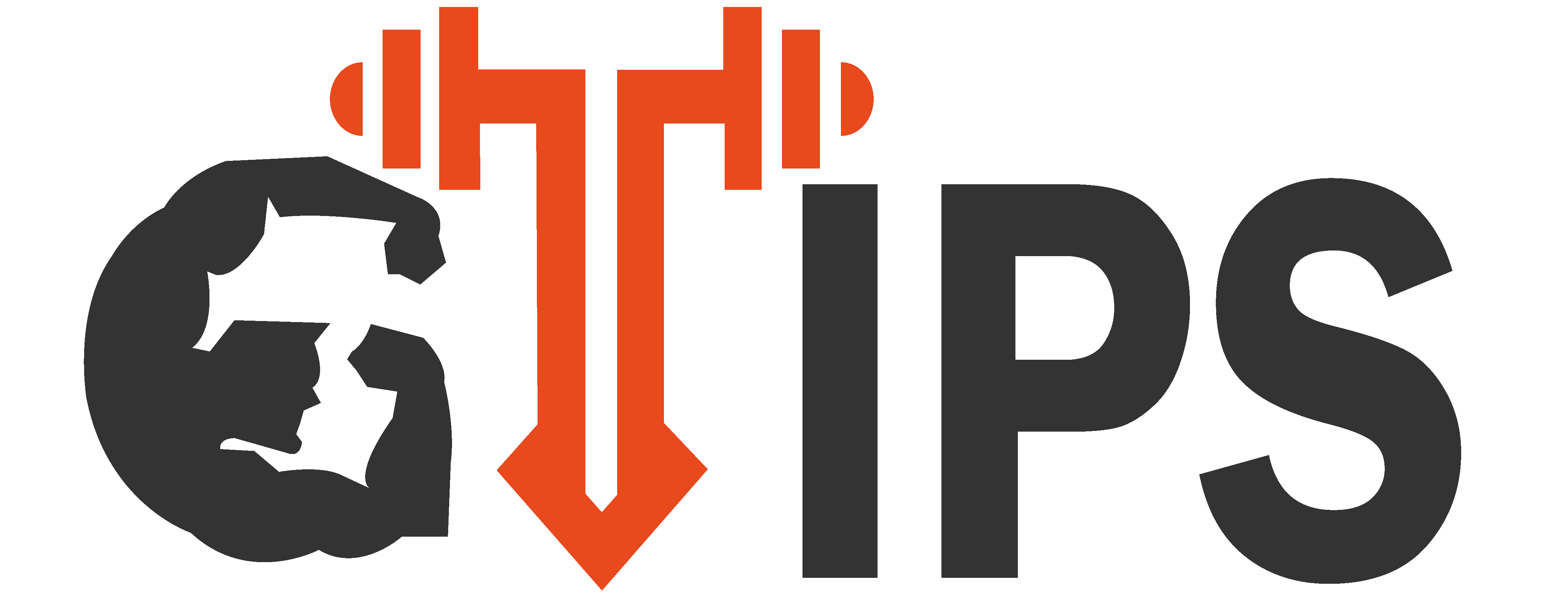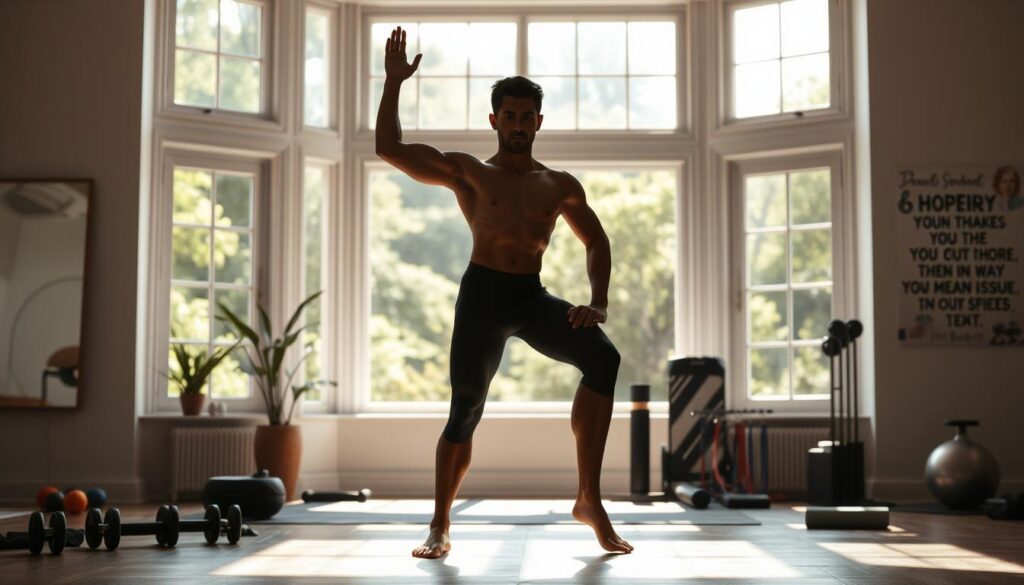Ever wondered why some athletes easily hit their fitness goals while others struggle? The secret might be in visualization. By tapping into mental imagery for exercise goals, you can reach new heights. Visualizing success in fitness is more than just daydreaming. It’s a proven method that gets your mind and body ready for success.
Discover how these strategies can change your workouts and your mindset towards fitness. It’s a game-changer.
Key Takeaways
- Visualization helps you unlock your full fitness potential.
- Mental imagery for exercise goals can significantly enhance performance.
- Achieving fitness goals through visualization involves both mind and body coordination.
- Incorporating visualization strategies fosters confidence and reduces anxiety.
- Understanding the scientific basis of visualization can motivate you in your fitness journey.
The Power of Visualization in Fitness
Visualization is a strong tool for reaching fitness goals. It lets you imagine success and boost your performance. By visualizing your workouts, you mentally prepare for success. This boosts your motivation and confidence.
Understanding Mental Imagery for Exercise Goals
Mental imagery is about creating clear pictures of your fitness goals. Imagine yourself finishing a hard workout or crossing a race finish line. This mental rehearsal strengthens your mind for real performance.
How Visualization Enhances Performance
Studies show athletes who use visualization do better in their games. Regular mental practice can greatly improve your skills. Elite athletes, like those in success stories, see big confidence boosts from mental rehearsal.
What is Visualization in Fitness?
Visualization in fitness is more than just daydreaming. It’s about using your mind in a special way to get better at sports. This method, called mental rehearsal, lets athletes practice without moving a muscle. It helps you feel closer to your fitness dreams.
Defining Mental Rehearsal and Its Benefits
Mental rehearsal means imagining yourself doing physical tasks. It strengthens your brain’s pathways for top performance. Research shows it boosts your drive and confidence, helping you see yourself reaching your fitness goals. By using mental imagery for physical growth, you get better at the actions, making them easier in real life.
Importance of Engaging the Senses
Using all your senses makes visualization more powerful. When you add sights, sounds, and touches, your mental picture gets clearer. This approach helps you remember better and perform better too. It connects your mind’s practice with real success.
Adding these visualization methods to your workout can change your game. It sets you up for lasting success and keeps you motivated.
Visualizing Success in Fitness
To start visualizing success in fitness, create clear mental images of your goals. Imagine yourself reaching specific fitness milestones, like running a certain distance or finishing a tough workout. By vividly picturing these moments, you connect more deeply with your goals, making them seem within reach.
Creating Clear Mental Images of Your Goals
Your visualization should be detailed and specific. Imagine not just the end result but also the journey. Picture how your body feels during each exercise, the sounds around you, and the emotions of your achievements. This level of detail helps your brain see these moments as real possibilities, boosting your motivation and guiding your actions.
Studies show that athletes who use visualization strategies often do better than those who don’t. This is because they mentally prepare themselves for success.
Establishing a Positive Mindset
Having a positive mindset is just as important as clear mental images. Use positive affirmations and believe in your abilities. Positive visualization helps reduce anxiety and builds self-confidence, helping you tackle your training with confidence.
Combining detailed imagery with a positive outlook can greatly improve your chances of hitting your fitness goals.
Benefits of Visualization Techniques for Athletic Achievements
Using visualization techniques can change how you train and perform. It helps you mentally practice your actions and strategies. This boosts your confidence and reduces anxiety, key for athletes.
Improving Confidence and Reducing Anxiety
Visualization helps you prepare mentally for games. Seeing yourself succeed can make you believe in yourself more. It also helps calm your nerves before a game.
Athletes often feel more ready and focused after visualizing their game. This mental practice makes them more confident, which is important for big games.
Enhancing Muscle Memory and Skills Acquisition
Visualizing physical actions strengthens muscle memory. Your brain gets better at connecting movements, like a perfect jump shot. This makes learning new skills faster and improves existing ones.
Studies show athletes who use visualization perform better. It’s clear that mental practice helps athletes succeed on the field.
| Technique | Benefit | Outcome |
|---|---|---|
| Mental Rehearsal | Improves confidence | Enhanced performance under pressure |
| Imagery Training | Reduces anxiety | More relaxed approach to competition |
| Focused Visualization | Strengthens muscle memory | Faster skills acquisition |
| Positive Affirmations | Boosts self-belief | Consistent performance improvement |
Implementing Visualization Strategies for Fitness Success
To make the most of visualization strategies, setting clear goals is key. Having specific, reachable targets gives your mind a clear direction. This helps you focus your mental practice and guides your actions.
Setting Clear Goals for Your Visualization Practice
First, identify your fitness goals. These could be anything from losing weight to getting stronger. Write down your goals in detail. Break big goals into smaller steps for easier tracking.
Adding these goals to your visualization sessions makes them real. You can mentally practice achieving them.
Incorporating Visualization into Your Workout Routine
Adding visualization to your workout routine boosts consistency. Set aside time for visualization just as you would for physical training. Imagine yourself doing well in tough workouts and reaching your fitness goals.
This mental prep boosts motivation and performance. It also strengthens your commitment to fitness. The more you use these techniques, the better your chances of success.
Case Studies: Successful Athletes Who Use Visualization
Looking into how top athletes use visualization can teach us a lot. Many famous athletes have reached new heights thanks to mental rehearsal. Their stories show how visualization boosts performance and gives them an edge.
Michael Phelps and His Mental Rehearsal Techniques
Michael Phelps, a legendary swimmer, credits his success to visualization. He vividly pictures every part of his races, from start to finish. This mental prep helps him stay calm and focused under pressure.
Visualization Techniques of Serena Williams
Serena Williams uses visualization to get ready for big matches. She imagines herself in tense moments to stay calm and make quick decisions. This practice sharpens her focus and performance in key moments.
Usain Bolt’s Approach to Mental Imagery
Usain Bolt, the famous sprinter, uses mental imagery to get ready for races. He pictures each step and the feelings he’ll have while racing. This helps him build the confidence he needs to perform at his best.
| Athlete | Visualization Technique | Benefits |
|---|---|---|
| Michael Phelps | Detailed visualization of race scenarios | Enhanced focus and preparedness |
| Serena Williams | Imagining high-pressure match situations | Increased composure and decision-making |
| Usain Bolt | Visualizing each stride and race emotions | Bolstered confidence and performance |
Creating a Personalized Visualization Routine
Creating a personalized visualization routine can boost your motivation and consistency. It’s important to find the right place to practice these exercises. This helps you focus and connect with your mental images better.
Finding the Right Environment for Visualization
Look for a quiet and comfy spot with few distractions. It could be a calm corner at home or a peaceful outdoor area. Having a consistent place for your sessions helps you focus on your fitness dreams.
By linking this space to your visualization, you make a stronger mental promise to reach your goals.
Engaging Emotions and Senses During Practice
While practicing, use your emotions and senses to make the experience richer. Think about the pride or excitement you’ll feel when you reach your fitness goals. Add sensory details like the sound of your heartbeat or seeing your progress.
This makes your practice more effective. A personalized routine boosts your motivation and dedication. To keep going on your fitness path, join groups or find people who support you. Supportive environments help you stay consistent and engaged.
Best Practices for Visualization Exercises in Health and Fitness
Visualization exercises can greatly improve your fitness journey. One key strategy is to make visualization a regular part of your routine. Doing this regularly helps strengthen the neural connections needed for skill execution.
Without consistent practice, the benefits of visualization may not be fully realized. This is why regular practice is so important.
Regular Practice and Consistency
It’s essential to include visualization in your training routine. Try to do visualization exercises every day, even if it’s just for a few minutes. Visualizing your goals can help you stay focused during workouts or competitions.
Regular practice helps your mind and body work together better. This can speed up your progress and improve your performance.
Feedback and Adaptation of Visualization Techniques
Getting feedback from real-life experiences is key to improving your visualization techniques. Pay attention to your body and how mentally ready you are. Use this feedback to adjust your visualization practices.
Change your imagery based on how well you perform. This keeps your visualizations relevant to your changing health and fitness goals.
Managing Pressure and Adversity Through Visualization
In the world of fitness, staying calm and focused is key. Visualization helps manage pressure, preparing you mentally for tough situations. It boosts your decision-making, leading to better performance in workouts or competitions.
Staying Calm and Focused in High-Pressure Situations
Visualization lets you mentally prepare for challenges. It helps you stay calm and focused in stressful moments. By imagining success, your brain gets ready for real-life situations.
Regular visualization strengthens your focus. This means you can perform better under pressure.
Building Mental Resilience for Fitness Challenges
Visualization also builds mental toughness for fitness challenges. It trains your mind to handle setbacks without losing motivation. This mental strength helps you overcome physical and emotional barriers.
Conclusion
Starting your fitness journey? Visualizing success is a key tool to reach your goals. It’s not just extra; it’s essential for motivation and performance. Research shows that setting clear goals and seeing yourself succeed boosts your chances of achieving them.
Using mental imagery in your workouts creates a clear path to success. This practice helps you overcome obstacles, builds confidence, and keeps you focused. It also helps in personal growth, aiming for both physical and mental well-being.
Adding visualization to your routine can unlock your full fitness capabilities. For better goal setting, try different motivation techniques. Learn more by checking out fitness motivation techniques online.





